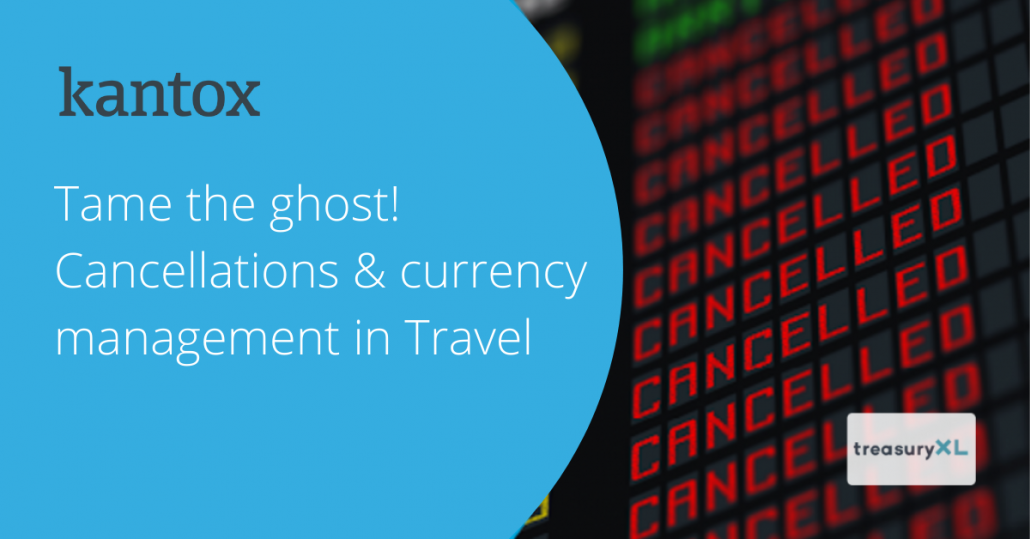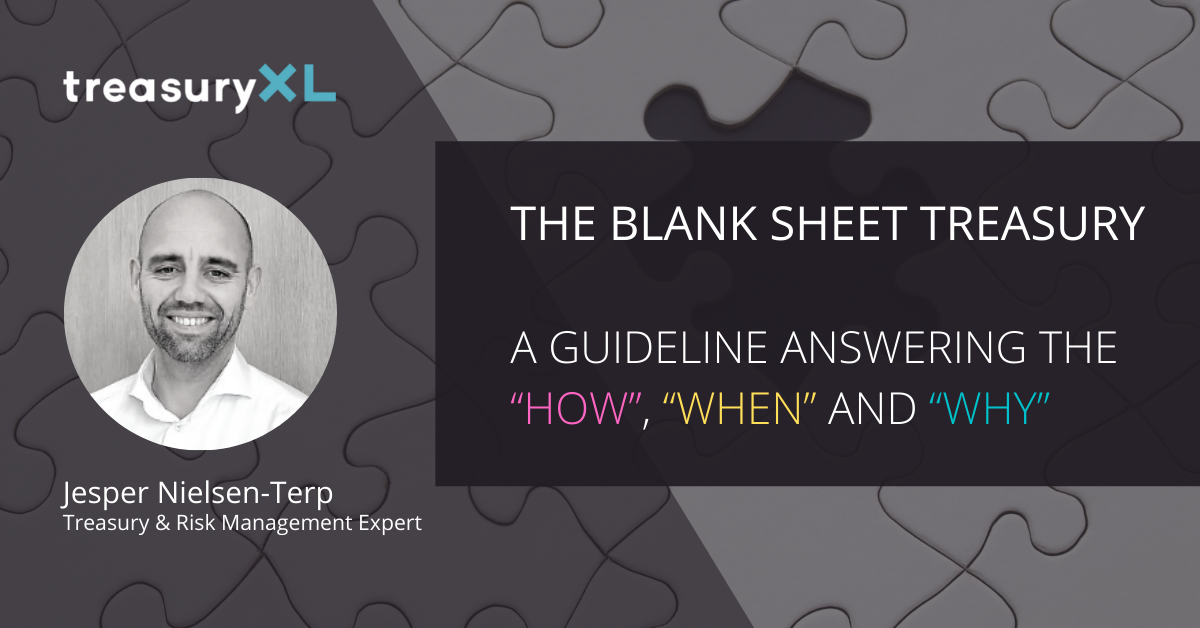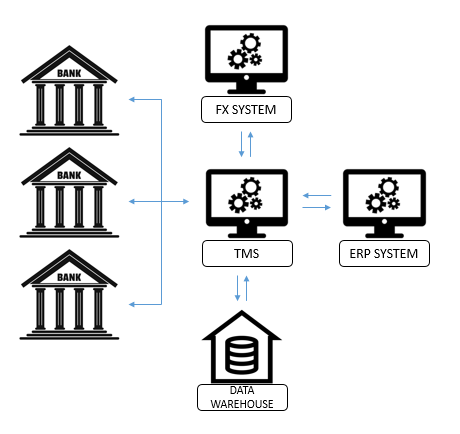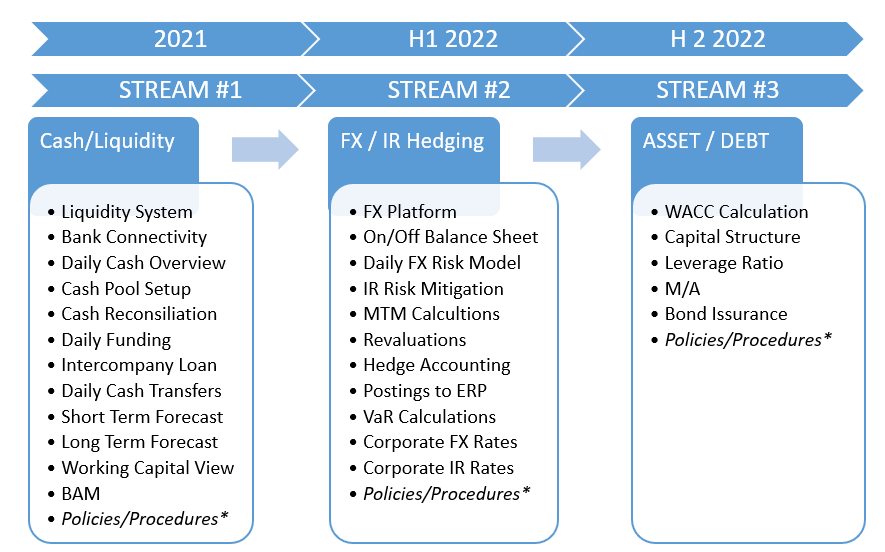What are BIC/ SWIFT codes, how to find them, and how do they work?
03-01-2022 | treasuryXL | XE | LinkedIn |
Just booked a rooftop hotel in Manhattan? Or bought an authentic Chinese vase at an auction in Hong Kong? When making an international payment, you need payment details such as BIC (also known as SWIFT address), the country code and IBAN. Not sure where to find this key ingredient to an international money transfer? Our guide will show you all there is to know about SWIFT and BIC codes.
Your bank or other financial institution must know where to transfer money to send or receive money worldwide, but how do they know? Make way, for a BIC/ SWIFT code is about to enter the picture! If you’ve ever used Xe to send money or read our guide on sending money, you’ve probably noticed that you’ll need a BIC or SWIFT code. But what exactly is it, and where would you seek for it?
From what a SWIFT/ BIC code is and why you need one to how to find one quickly and use it for international money transfers, our guide will teach you everything you need to know about this code. It’s time to get ready, get set, and go!

What is a BIC or SWIFT Code?
BIC stands for Bank Identifier Code, and SWIFT stands for the Society for Worldwide Interbank Financial Telecommunications. Sometimes, people use the terms “BIC” and “SWIFT” interchangeably. A SWIFT code or SWIFT ID typically identifies banks and other financial institutions worldwide, for international transactions. More specifically, it says who and where these institutions are, so that your money goes to the correct place – you might even think of it as a global identity card for banks.
The International Organization for Standardization (ISO) recognizes and approves SWIFT codes for financial and non-financial institutions. Right now, there are over 40,000 live SWIFT codes in the world.
What does a BIC/ SWIFT code look like?
SWIFT/ BIC codes contain 8-11 characters that identify your city, country, bank, and the branch of your bank. The code may look something like this: AAAABBCCXXX
All muddled up? Let’s get this BIC format straight:
-
AAAA: 4-letter bank code that’s usually a shortened version of your bank’s name.
-
BB: 2-letter country code that represents the country in which the bank’s located.
-
CC: 2-character location code, pointing to the place where the bank’s head office is situated. It’s made up of letters and numbers.
-
XXX: 3-digit branch code that specifies a particular branch of the bank, usually the bank’s headquarters. These last 3 digits are optional, though.
To help you understand better, we’ve listed out the BIC/ SWIFT codes for a few large banks from around the world:
-
Scotiabank (Canada): NOSCCATTXXX
-
Charles Schwab Bank (US): CSCHUS6SXXX
-
Bank of England: BKENGB2LXXX
-
State Bank of India: SBININBBXXX
Why do I need a BIC/ SWIFT code?
If you want to send money around the world, you’ll almost always need to use a SWIFT/ BIC code. That’s because money transfers technically don’t actually transfer money around the world. Banks securely transmit information to one another through the SWIFT system or their other channels, which lets them know where the money should come from (which account should be debited), and which account should be credited with the money. In short, without this code, your bank won’t know where exactly they should send your money to.
So, it’s important for a bank on one side of the world to find the right bank on the other side, when it comes to international wire transfers, even when you use an international money transfer app like Xe, you’ll have to enter the BIC/ SWIFT code of the recipient’s bank for wiring money to the recipient, because the money will travel from your bank account to your recipient’s bank account.
How do I find my SWIFT/ BIC code?
Don’t worry, you have a few options.
- Check the bank statements
You can usually find your bank’s BIC/ SWIFT code in your bank account statements. If you’re using an online bank, log into your digital bank account to easily view your bank statement.
- Check the bank’s official website
Visit the bank’s website and check their Frequently Asked Questions (FAQs) section, international wire transfers, and other related links for their BIC/ SWIFT code. If there’s a search feature on the website, enter “SWIFT code” in the search box.
- Contact your bank
In case you still can’t find the BIC/ SWIFT code, reach out to your bank via live chat, phone, social media, or email.
How do I verify a SWIFT code?
When sending or receiving money, always cross-check the BIC/ SWIFT code and other details with the recipient or your bank before you or the sender sends the money.
But why should you cross-check it?
As a matter of fact, if you enter a SWIFT code that doesn’t exist, the bank should reverse the payment you’ve made, and return your money. They’ll be charging a specific fee for that, though, and it might take some time before you get your money back.
As soon as it hits you that you’ve entered the wrong code to send money internationally (uh-oh), get in touch with your bank right away. They may be able to cancel the transaction, so keep your fingers crossed.
You can avoid such a scenario if you make sure that the BIC/ SWIFT code has:
- No typing mistakes
You might think entering a SWIFT code is the work of a moment. But when you finally type it, character by character, it might seem as long as a marathon. Since it’s easy to make a mistake while typing in the code, try to copy and paste the code whenever possible.
- The correct format
Always stick to the format of the BIC/ SWIFT code that the recipient has given you. For example, don’t type the country code before entering the bank code. And remember, there shouldn’t be any spaces between the characters in the code.
How do I transfer money using a SWIFT code via money transfer apps (like Xe)?
Once you sign up on online money transfer apps like Xe, you need to link your bank account directly to the app. After that, you can send money straight to the recipient’s bank account through a wire transfer, no matter where in the world he or she may be. You’ll usually have to follow these steps for wiring money between banks via Xe:
-
Log in.
-
Confirm which currencies you’d want to exchange. You can use Xe’s free Currency Converter tool for a quick check on the mid-market rate.
-
Enter the amount you wish to send.
-
Enter the recipient’s name and address.
-
Enter the recipient’s bank details, including the BIC/ SWIFT code and the International Bank Account Number (IBAN) of his or her bank.
-
Choose your payment method and confirm the money transfer.
Is IBAN the same as SWIFT?
No, IBAN and SWIFT are 2 different codes, but both of these do the same job – sending or receiving money. Banks use SWIFT codes to identify bank branches for making international payments. On the other hand, IBAN codes specify individual bank accounts for both domestic and international payments.
- Do I need an IBAN number or a SWIFT code?
It depends on the country to which you’re sending money. For example, banks in the US, Australia, and New Zealand don’t use IBAN numbers, but they use SWIFT codes for different banking services. But if you’re wiring money to a country within the Eurozone, you’ll surely need a SWIFT/ BIC code along with an IBAN number.
Is a SWIFT/ BIC code the same as a sort code?
Nope, sort codes aren’t the same as SWIFT codes. Sort codes are 6-digit codes that help British and Irish banks to identify bank branches for domestic payments (payments within a country).
- Do all banks use BIC/ SWIFT codes?
No, all financial institutions, especially some small banks and credit unions, don’t have SWIFT codes. Instead, these institutions contact banks that do have BIC/ SWIFT codes, and ask them to serve as intermediaries for wiring money. You might also come across some financial institutions that use SWIFT for only a certain number of their branches, and not all of them.
Is a SWIFT code the same for all branches?
It depends on the recipient’s bank. Some banks may have one BIC/ SWIFT code for all their branches, while others have unique SWIFT codes for each of their branches. Plus, since all the branches of a bank may or may not use the SWIFT network, the code usually specifies the bank’s head office or primary office. So, are you ready to make an international money transfer using a BIC/ SWIFT code? Download the Xe app or sign up today!
International Mass Payments for Growing Businesses
23-12-2021 | Xe | treasuryXL | LinkedIn |
Streamline your payment processes, and improve international business partner relationships. Spend more time delivering on your clients’ needs.

Business process outsourcing and business process automation are not new business models. Yet traditionally, they have been targeted at high-volume, manual tasks like data entry, document processing, and bookkeeping. Delegating international transactions to a mass payments service provider like XE saves your business, and often your recipients on each completed transaction.
One of the many benefits of working with a payment service provider which specialises in international money transfer is that we provide services based on transaction volume. A small business will often just need help to expedite the fundamental payment administration and remittance processes. a large business with significantly more concurrent transactions will typically prioritise access to a scalable payments platform that can integrate with their core financial systems.
The executive appeal of subscribing to a mass payments API through a financial services business like XE is that it provides measurable benefits, such as:
-
Cost containment by streamlining payment tasks
-
Greater efficiency and reduced errors
-
The ability to focus full-time employees on more strategic, high-value tasks
-
Reduced training and technology overhead
-
Opportunities to take advantage of volume-based discounts
Is your business looking to find savings opportunities by paying multiple international suppliers, contractors, or employees? Simultaneous payments triggered at optimal exchange rates minimises the impact of unpredictable currency value fluctuations on your bottom line. You can also initialise bulk payments when you feel the time is right, be it after business hours or on weekends.
The Right Payee, in the Right Currency, at the Right Time
XE Mass Payments services are can be made securely to beneficiaries in over 220 countries and territories, in any of 139 currencies. One of our clients increased the efficiency of their international remittances from two days to a mere five minutes.
Consider all the productive work, collaboration, and planning which can be done in those rescued hours which would have been otherwise spent filling out forms, routing payments, and reconciling accounts.
Are you ready to streamline your payment processes, and improve your relationships with your business partners overseas? Do you want to minimise administrative tasks, and spend more time delivering on your clients’ needs?
XE Mass Payments: A Proven Platform from the World’s Trusted Currency Authority
XE Mass Payment API and related services:
-
Are on par with the banks in terms of security, privacy, and regulatory compliance.
-
Rival or exceed bank services in terms of speed. We work to avoid intermediary banks wherever possible.
-
Are less costly for your business, and generally don’t carry recipient fees.
-
Are an excellent way to reduce manual keying errors.
-
Are available to your business on your schedule, during the week or on weekends.
-
Can help you qualify for discounts for prompt payment (such as 2% within 10 days)
-
Can be contracted as a stand-alone online managed service, or as an integrated API solution to interface with your company’s financial ERP and accounting applications.
-
Are a great way to avoid pitfalls many companies make when doing business with trading partners in emerging markets. Late or inaccurate payments to employees, contractors or suppliers are bad for your company’s reputation and can be disruptive to the natural flow of your business.
Here are some additional details about our Mass Payments offering.

Mass payments services are packaged for your company based on:
-
The countries where your suppliers, employees, and other beneficiaries are located
-
The volume of payments you manage per month
-
The channels through which your business payments flow, be it through our APIs or our managed service
-
Any advisory or foreign exchange services which your company needs, be it expanding your payments to emerging markets, risk management, market orders or forward contracts.
Tame the ghost! Cancellations & currency management in Travel
20-12-2021 | treasuryXL | Kantox | LinkedIn |
How to automate the FX treatment of cancellations
It is no secret that the wave of cancellations following Covid-imposed travel restrictions has been a nightmare for travellers, airlines, hotel chains and tour operators alike. In the United States alone, cancelled domestic flights peaked at 137 thousand in April 2021. Largely due to cancellations, air traffic in Europe in 2021 was barely equivalent to 43% of the level seen before the pandemic.

Given the amount of time and resources devoted to adjusting their refunding policies, many players in the industry are still scared by the ghost of cancellations. But is that fear warranted? Not when it comes to FX management. This is because Currency Management Automation gives travel companies the tools to minimise the P&L impact of cancellations.
When it comes to FX management, the message is crystal clear: the ghost can be tamed.
Cancellations and FX exposure
FX risk management is a process in three phases: the pre-trade, the trade and the post-trade phase. Cancellations are an important element of the pre-trade phase, when the exposure to currency risk is collected and processed. Now, the type of exposure and the way it is managed depends, crucially, on each business’ pricing dynamics (see: “The hidden secret behind the different types of FX exposure”).
In the Travel world, dynamic prices are the norm (see: Currency Management Automation in Travel Distribution). OTAs, Bed banks, Hotel chains, DMCs and others frequently update their FX-denominated prices, and their cash flows are at risk from the moment of the bookings till settlement. For this reason, most Travel distribution firms apply micro-hedging programs that take those ‘firm commitments’ as the key FX exposure item.
This is where cancellations kick in. A cancelled FX-denominated booking diminishes the exposure to currency risk if the corresponding hedge has not been executed, or if an already executed trade is closed out at the same FX rate. Otherwise, there would be a situation of over-hedging. Manually adjusting hundreds or thousands of individual pieces of exposure to their corresponding hedges can quickly become an impossibly complicated task.
Taming the ghost in FX-related cancellations
Currency Management Automation provides treasurers with a number of tools to tame the ghost of cancellations. The first line of defence is to include —as part of business rules defined in the process of FX automation— an automatic cancellation rate. For example, if managers set an average cancellation rate of 10%, Kantox Dynamic Hedging® will hedge the remaining 90% hedge of the bookings.
As more information becomes available, this cancellation rate can be refined and adjusted by management when it so desires. While it is good practice to try and anticipate events, perfect accuracy cannot be expected in matters related to travel cancellations, especially in the current situation. This is why a second line of defence is provided by what our FX automation software takes as ‘negative entries’, a more efficient way to deal with cancellations. Let us briefly see how that works.
An entry is an individual piece of exposure. As part of the implementation phase of the software, risk managers establish a set of business rules that include —for each currency pair— the accumulated value of the entries they wish to hedge. These instructions also include a rule for setting negative entries from their own ERP, Booking Engine or Data Lake in the event of cancellations. API-transmitted negative entries automatically cancel the corresponding FX exposure.
But what happens when a negative entry is pushed after the corresponding hedge has been executed? Not much. Because travel-related FX exposure typically includes hundreds/thousands of individual transactions, new positions are constantly entered for the same currency pair and value date. The more granular the information included in these entries, the more accurate the FX hedging process, and the better the traceability of each piece of exposure.
Conclusion: speed is the name of the game
As the effects of the global pandemic still loom large, the ability to quickly process cancellations is a must for airlines, hotel chains and wholesalers in general. FX management is an integral part of this process — and it relies mostly on automated micro-hedging programs for bookings or ‘firm commitments”.
These micro-hedging programs, in turn, automatically treat cancellations as a key element of the ‘pre-trade’ phase of exposure management. If your aim is to tame the ghost of cancellations —while relieving the finance team from performing repetitive, resource-consuming and potentially risky manual tasks—, FX automation is the starting point.
The time to act is now!
Foreign Exchange Hedging – Putting More Flow into Your Cashflow
16-12-2021 | Xe | treasuryXL | LinkedIn |
Volatility in the market creates hedging opportunities. You can more accurately forecast margins, and have peace of mind knowing your costs won’t increase.

Any business that imports or exports goods or services have a foreign exchange requirement. Depending on how large the volume of their orders and/or sales, foreign exchange can significantly impact gross margins and has the ability to derail profit.
Importing costs fluctuate with the value of the local currency – for example, the New Zealand dollar (NZD). In the past 5 years, the NZD has moved by an average of 8% per year. In that same timeframe, if your suppliers either increased or decreased their prices by this amount, most people would do everything possible to try and mitigate the downside. This is a primary value-add of foreign exchange traders and brokerages that have the best interests of their clients in mind.

How to hedge
Volatility in the market creates hedging opportunities. By hedging, you are able to more accurately forecast margins, and have peace of mind knowing your costs won’t increase. This allows you to focus on your core business functions, be they manufacturing, distribution, or otherwise.
A forward exchange contract (FEC) allows you to buy or sell a defined amount of foreign currency on a given date in the future at a defined rate. The disadvantage of an FEC is that you may miss out on favourable market movements. However, since consistently accurate crystal balls aren’t standard issue for any ForEx advisor, the hard part is knowing where the market will go.
Experience, expertise, and depth of information resources are two of the differentiating factors between XE and our competitors.

What stops hedging?
Hedging challenges arise when your forecasts aren’t reliable, and you receive inaccurate information from sales or production advisors. Or perhaps you are running a lean supply-chain and don’t want to commit tying up cash flow to an FEC.
You can incorporate hedging into your budgeting to ensure your costed rates are covered. This prevents a situation where the currency is lower than what you’ve budgeted, and potentially a loss is being made each time you purchase FX.
For exporters, there is even less appetite to hedge. This is partly because the NZD has been strong over the past 5 years against most currencies.

The importance of interest rates
Every country wants their currency lower to attain more from exports. You will hear New Zealand’s Reserve Bank (RBNZ) say they want the currency lower. In their view, having the NZD/USD rate at 65c instead of 75c is a major positive. This isn’t what importers want to hear, but it’s the reality of the foreign exchange markets.
Interest rates dictate currency movements. The RBNZ pays particular attention to inflation, wages, GDP and employment data to make their decisions. But, the NZD is at the mercy of international reserve banks, including the US Federal Reserve and the ECB (European Central Bank).

Conclusion
Volatility is here to stay. Big swings in the market will persist. It’s almost impossible to predict where the markets will move. Yet XE has the people, processes and technology to give your business the best odds of success.
It’s unfair to judge yourself on attaining the very best rate when hedging foreign exchange. Our mantra is to empower businesses to compete to their full potential in international markets.
XE works with over 6,000 clients throughout New Zealand, and several thousand more around the world to help manage foreign exchange requirements to minimise fluctuations on margins. It would be our pleasure to advise you on how to mitigate the impact of currency on your business’ cash flow.
What should you know about SWIFT system transfers?
09-12-2021 | Xe | treasuryXL | LinkedIn |
The SWIFT network is well-known and used by banks around the world, but it may not be the best channel for you to send your money transfers through.

The Society for Worldwide InterbankFinancial Telecommunication (SWIFT) network, which was founded in Belgium in 1973, handles about half of the world’s cross-border fund transfers. As international commerce has grown, the SWIFT network has grown commensurately. It handled about 2.5 million daily transactions in 1995 and more than ten times that many in 2015.
But SWIFT is not a bank. It does not even touch the money which passes along its network. Instead, SWIFT sends payment orders to correspondent accounts at member banks. As such, SWIFT is strictly a bank-to-bank transfer service.
If you’re sending a money transfer with a bank, you’ll become acquainted with the SWIFT system. But is it the best channel to send your money through? We’re not so sure.
What does the SWIFT system mean for you and your money transfers?
-
Added fees. In order to be members and transfer through the SWIFT system, banks are charged SWIFT fees. To counter this, both the recipient and the correspondent bank usually add fees to SWIFT transfers. Somebody, either the sender or the recipient or a combination of both, must pay them.
-
Bad exchange rates. There are some hidden currency transfer costs, at least in most cases. Currency exchange rates vary in different markets and at different times. Banks routinely choose the worst possible currency exchange rate. Then, they quickly move the money to another marketplace and pocket the difference.
-
Long transfer times. As mentioned above, SWIFT completes “most” of its transactions within thirty minutes. In this case, “most” means about half. Some transactions could take several days to process. Other delays, such as large transfer amounts or first-time users, could delay the process even more.
How does the SWIFT network work?
Today, SWIFT connects about 10,000 financial institutions in about 200 countries. That sounds sweeping and impressive. But most of its transfers go through fewer than two hundred banks, brokers, clearinghouses, and corporations.
Furthermore, SWIFT is the industry standard for linguistics and code, even for non-SWIFT institutions like Xe. SWIFT works with various international organizations to set content and format standards for messages and transactions. In other words, the network infrastructure usually handles codes as opposed to account numbers and other sensitive information. That’s one reason SWIFT is so secure.
Another reason the network is secure is that its three data centers in the United States, Switzerland, and the Netherlands communicate with each other via subterranean or submerged cables. These communications channels are difficult to hack.
SWIFT upgraded its network infrastructure in 2001 and again in 2008. Not coincidentally, 2008 was also the year international funds transfer prices went up significantly. As part of the upgrade, SWIFT required all member institutions to replace their bilateral key exchange encryption hardware with a Relationship Management Application. Member banks gladly passed these costs along to consumers.
How secure is the SWIFT system?
2008 was a long time ago in technological terms. The smartphone you had back then, assuming you had one, probably looked like one of those World War I field telephones compared to the one you have now. Yet 2008 was also the last time SWIFT did any major security upgrades.
The network paid the price in April 2016. Hackers used malware to steal about $81 million from the central bank in Bangladesh. The malware intercepted the supposedly unbreakable SWIFT codes and also covered the hacker’s tracks. Perhaps most disturbingly, SWIFT admitted that these thieves, or ones similarly equipped, had tried this before.
A few months later, an Ecuadorian bank sued Wells Fargo after the latter allegedly honored a $12 million fraudulent transfer. Hackers obtained canceled transaction requests, altered the amounts, and submitted them.
Questions continue about the network’s security. Some banks claimed they have lost money to hackers in much the same way. These allegations are under investigation.
Can you make money transfers without using the SWIFT system?
Yes, you can! Many banks and providers utilize the SWIFT system to send their money transfers due to its security, efficiency, and well-established reputation, but some providers instead opt to use other channels (or even create their own channels) to send money transfers.
Do you want an example of one such provider? Well, now that you mention it…
Sending money with Xe
SWIFT might be the largest international funds transfer platform in the world. But in terms of security, efficiency, privacy, and a few other areas, it falls short.
So, if you need a reliable and affordable way to send money overseas to family or friends, give Xe a try. We send money through our own money transfer channels, which means that we aren’t on the hook for additional SWIFT system fees and delays—and neither are you.
But don’t worry: our channels are still completely secure. We adhere to regulatory standards in every country that we do business in, with bank-grade security measures to ensure that your money and information are completely safe
The Blank Sheet Treasury – a Guideline answering the “How”, “When” and “Why”
07-12-2021 | Jesper Nielsen-Terp | treasuryXL | LinkedIn
During times of crisis, like the financial crisis in 2009, or the Covid-19 pandemic which still hits us, we often hear the old phrase “Cash is King”. The Treasurer and the Treasury Department are once again back in the middle of the fire by the end of the day. Influenced by the CEO or the CFO, the board of directors is overall responsible for the financial strategic target settings. The tasks and responsibilities flow however from the top management and will end up at the Treasurers’ desk. Therefore, A treasurer has to structure the initial thoughts when building or re-shaping the treasury setup.

To be prepared for the fireplace, I believe that it is crucial for the Treasurer or the Finance Department employees carrying out treasury activities, that a clear strategy is implemented and outlined. Not only a strategy for how the policies and guidelines are carried out, but a strong mandate from Top management and maybe all the way from the Board of Directors. A mandate carved in stone, so no one can be in doubt when something hits the fan.
“Do not ask what the company can do for you, but ask…”
There are a couple of questions that all back-office functions need to ask themselves on a regular basis. The answer to the questions should dictate the activities that are undertaken on any given day. First, they should ask, “Is this activity going to increase the company’s revenue?”. If the answer is no, they should move on to question number two, “Is this activity going to reduce the company’s cost base?”. Once again, if the answer is no, then they should move on to question number three, “Will this activity delight the customer?”. If the answers to all three of these questions are no, then we need to examine the activity to understand why we are conducting it.
The Blank Sheet Treasury
In order to understand why the recommendations that follow are applicable, we must decide what it is that we as a Treasury Department are trying to accomplish and why. There are certain practices in Treasury across the world that should drive our behavior. In examining these practices, one potential structure emerges; the Blank Sheet Treasury. This way we are starting with our objectives and future state in mind instead of our current state.
In my opinion, the future state should equal the Treasurer to be prepared and know how to handle future potential crises, whether it is a business-related financial crisis or a worldwide pandemic.
Coming back to the phrase “Cash is King”, when in the middle of a crisis, everything else than access to cash or cash visibility should be a next day issue for the Treasurer. Stating this should give an idea why I believe the Blank Sheet Treasury always should start within the area of Cash/Liquidity Management, which of course can come in many different flavours.
The initial process
Coming back to the statements about having a focus on future state and the mandates to get there, the initial process visualized below is a tool that the Treasurer needs in his/her toolbox. Maybe not the most innovative tool, but most likely one of the most important tools, if not the most important, when shaping, re-shaping and driving treasury.
The process map works like a Lego building instruction, where there actually is a possibility to skip or change the order, but when doing it, the result will not be what we were aiming for, or even worse than what our surroundings (stakeholders) thought we were aiming for. So if the order somehow is changed or some parts are skipped, it will be similar to an “un-finished” Lego construction. It will in some cases be functional, but there will always be some spare and important “bricks” left on the table. In the Lego context, some left bricks might not make a difference or at least not a huge difference, but in a corporate context the repairment will have a critical impact on time, costs and lost confidence from stakeholders.

The foundation for everything else
Before moving to the discussion on the Leadership mandate and afterwards on daily-life guidelines for the Treasury Department, let’s first make sure that a part of the objectives and future state is the idea that everything is to be accomplished (now or in a few years). Not only will it be a guide for the “how, when and why”, but also because top management, which gives access to the budget, want visibility and take decisions based on valid information.
As the majority of Treasurers and their departments have Cash/Liquidity Management as one of their key deliveries and as the Cash/Liquidity Management highly impacts other workflows in the Treasury Department, it is somehow the foundation for everything else and therefore a good place to start.

This figure is of course not a golden rulebook, and for some Treasury Departments priorities can come in another order. But when talking to Treasurers about their priorities and building or re-shaping their setup, the figure outlines to a great extent how they see the structures and how they want to manage the process of reaching the end line.
Best Practise and Future Workflows
Each of the circles has some underlying characteristics and is decomposed into a number of workflows. Here, the objectives for the future state and best practise will come into play.
In this recommendation, Cash Management is identified as the foundation for other workflows. Next to that, when looking into job descriptions and talking to Treasurers about their key objectives, FX Risk Management is identified to be high on the agenda. Therefore, the following graphs will assist the visualizing and guidance of Cash and FX Risk Management.

The Best Practise box has to be filled out by the company (the Treasury Department), based on their needs and very much linked to the Objective/Future State. The question asked here is; ‘’Does the Company actually know what is the best practise in each of the workflows or could there actually be multiple solutions for the Best Practise?’’
The answer for both questions will for the majority of companies be that the Treasury Department has some thoughts and ideas for what they see as Best Practise for their setup, but at the same time they will recognize that a solution for the future state and the Best Practise for this, can come in different varieties – it is not a One Size Fits All. When agreed on the Best Practise for the future state, it will then be time to start visualizing the future workflows, which will give some thoughts and ideas for what actually has to be built, changed and implemented.

One of the pitfalls to avoid here is to not look too much into what worked in the past and in addition avoid looking at single workflows (in this example Cash and FX Risk Management).
As a normal part of being a human being, there can be a significant probability to start applying what worked well in the past, because the Treasurer might have some experience or preferences from similar projects. Thus, there will be a tendency of implementing the same workflows and systems used in the past, even though they do not fit into the entire puzzle.
The entire puzzle
Likewise in our own lives, the CFO wants to see the full picture and understand the full picture, before opening up the purse and increasing capital expenditure. With this in mind and the objective of getting a budget, do not only look into the short-term and easily reachable targets but think big and layout the entire puzzle. Still continue to grab the low hanging fruits though, because they are to be grabbed in order to keep momentum.
What is the entire puzzle and how can it be shown in a simple, but the informative structure, so no one will be in doubt of the individual workflows on the journey of reaching the objectives and creating a best-in-class treasury setup.
To assist in laying out the entire puzzle, all workflows will be identified and structured by their “Value” and “Importance”. Therefore, the below chart can be the guide for where to start as well as be used in the dialogue with the CFO and other stakeholders. Once again it is important to state that the chart is not a golden rule book, but an inspiration for how to make progress on the journey.

The red box will obviously be the initial most wins and the focus areas. Even though most wins have been identified, the entire puzzle is still unfinished, because it is actually laying like a puzzle.
The box has been unpacked and the puzzle pieces have been sorted. The next step for the Treasury Department will be to make the final move and bring their game plan. A game plan is divided into a number of streams showing the how, when and why.

*Policies/Procedures are in the initial phase not a part of the Blank Sheet Treasury, but as stated above in each of the streams as it is something that needs to be in place when start implementing.
Using streams and a given timeline for each of the streams as well as combining the different areas and the workflow process identified, the Treasurer now has made a construction manual for how to implement a best practise setup for the future state.
When utilizing some or maybe all of the recommendations and figures in this article, it will be possible for the Treasury Department to start taking the dialogue with the CFO and potentially other stakeholders, who need to be involved in the process. Because when being able to identify the how, when and why, and showing the entire process and the needs, the CFO can see the entire picture. A picture that can be used when moving into the next section, where mandates will be given to the Treasurer and a budget needs to be allocated.
Additional considerations
When using a Blank Sheet Treasury setup, the probability of succeeding is higher if no planning has been made. Moreover, the Treasurer needs to consider whether or not the right resources are in place when moving into the building, crafting or re-shaping the phases. When talking about resources, it will both be human resources and resources in terms of systems.
In terms of human resources, it can be internal resources, such as treasury and/or IT people, or external resources, such as treasury consultants. Speaking about consultants, it might be worth considering. Even though it comes with a cost, advantages are gained in time and knowledge.
On the system side, the Treasurer will have to decide whether or not he/she can bring his/her plan to live with the existing system landscape, and if not, the process will have to be added with a suggestion to make changes to the current system landscape.
Thank you for reading and looking forward to your thoughts.
Treasury & Risk Management Expert
Does Your Business Need Protection from FX Uncertainty?
| 02-12-2021 | Xe | treasuryXL | LinkedIn |
Don’t have a bank account? Want to have cash on you? In those cases, cash pickup could be the money transfer method for you.

One of the most interesting aspects of what the XE Business Solutions team does is having relationships across a broad range of industries. It helps our team curate unique insights into the various pressures and financial models being used by all the businesses we work with. The relationships our foreign exchange sales consultants build fine-tune their understanding of regional business sentiment and common international best practices.
There are many viewpoints on how to treat fast-moving FX rates. Some simply hope that the market will self-correct over time. Others make best-effort forecasts to try to understand all possible currency value directions of currency prices. From our vantage point, we see that businesses which are exposed to significant risks are more likely to achieve their objectives by employing a hedging program.
Foreign Exchange Volatility is a Universal Business Challenge
Big brands are just as susceptible to market movements as any other business segment. Currency volatility can impact profit margins if not managed correctly. Earnings reports are replete with warnings to shareholders pertaining to the value of assets and cash flows being affected by unmanaged or unexpected shifts in values of currency.
Looking deeper into hedging behaviours, enterprise-level businesses have a tendency to employ rich hedging programs and while it is by no means necessary to emulate their level of complexity; certainly the point regarding ‘best practices’ is clear.
Here are some insights on how the ‘big guys’ see ForEx risks across the globe as a result of their survey of corporations (Deloitte 2016 Global FX Survey and IMP Exchange Rate Risk Measurement and Management working paper: Issues and Approaches for Firms):
The top three reported ‘Primary hedging objectives’ were defined as:
-
Reducing income statement volatility
-
Protecting cash flows
-
Protecting consolidated earnings
In terms of strategy, the breakdown of risk management strategies is as follows:
-
8% of those surveyed employ a static or annual hedging programme (buying once a year)
-
31% use a rolling hedge but a flat amount (buying monthly, quarterly etc)
-
28% actively hedge using a rolling hedge strategy increasing over time to seek to average rates
-
33% use ad hoc or hedging by situation
The survey found that global corporate hedging strategies consist of these approaches:
-
Hedging using a financial instrument like a forward contract or option – 89%
-
Naturally hedging through balancing buying and selling in the same currency (some or all of the exposure) – 58%
-
Passing costs to suppliers or customers – 28%
-
No FX risk management practices at all – 2%
These breakdowns further:
-
Using a FX forward or Non-deliverable forward – 92%
-
Using FX Options – 30%
-
Using specifically FX Option collars – 15%
It is always interesting to get a look into the strategies employed by others and particularly the way that large, professional companies approach managing a key part of their risk program.
The key takeaway is that almost all of the companies Deloitte surveyed are hedging using some kind of financial tool specifically designed to provide consistency and protect cash flows.
Probably a much higher percentage than many would think are using Options products and rolling hedges over on a regular basis as part of a specific policy that guides them in virtually any market condition. Some real food for thought there….
Currency Market Analysis
Here is today’s market recap:
GBPEUR – The Pound maintained its position yesterday and this morning against the Euro as many traders await details on what steps Members of Parliament will take when it opens next week. Labour has indicated they will seek and emergency debate on Brexit next week but no information regarding a no-confidence vote is yet available.
GBPUSD – The pound is expected to come under pressure in general as the suspension of parliament is seen as increasing the chances of a no-deal Brexit. With this in mind, it appears likely that we could test and break the 1.2060/1.2015 level downwards, which likely will open up losses against the Dollar of some significant ground.
EURUSD – While the trading calm remains in the pair, there is a chance hard economic data will begin to outweigh hard sentiment from the ECB. Germany reported a decline of 2.2% in Retail Sales in July (on top of a downward revision). Consumption is largely propping up the German economy and this is slowing as well. A potential risk for euro weakness exists.
Please contact us for more info about your international payments or log in.
Click here to register and save now.
Please Note: The information, materials, accompanying literature and documentation available on our internet site is for information purposes only and is not intended as a solicitation for funds or a recommendation to trade. XE, its officers, employees and representatives accept no liability whatsoever for any loss or damages suffered through any act or omission taken as a result of reading or interpreting any of the above information.
Click here more information about XE
Figuring Out your Company’s FX Requirements
| 25-11-2021| treasuryXL | XE | LinkedIn
There is no crystal ball that can accurately tell you the future of where a currency will trade in the short, medium or long-term.

When looking to partner with an FX provider, your first priority should be to evaluate the payments your business has made previously in order to get a better idea of the FX products and services that will best fit your business’ needs. And, when selecting a provider, make sure they understand your industry and the jurisdictions you are making payments to.
1. Frequency

How often are you making (or will you make) international payments? Making overseas payments costs more per transaction. The more payments you make, the more critical it is to get the cost per transaction right.
2. Amounts

The amounts you transfer affects the overall cost. Smaller amounts will have a higher margin added, therefore it’s worth determining whether you can bundle your payments to sharpen the margin you attract.
3. Timing

With exchange rates constantly fluctuating, the timing of your payments will have an impact on your overall profitability. If you do business in areas where currency valuations are highly volatile, an FX provider which can effectively advise you about the risks and opportunities of short or long-term foreign exchange contracts is ideal.
4. Industry

Each industry is different when it comes to the three factors above. Therefore, selecting a provider that understands your industry can make a big difference, as they’ll often be able to suggest the best foreign exchange service offering for your type of business.
Your business is as unique as you are. Don’t settle for generic money transfer services which treat your business as a number on a spreadsheet.
5. Geography

Finally, when selecting an FX provider, make sure they understand any regional nuances particular to the jurisdictions you are sending your money to – this will ensure your payments go through smoothly, and in a timely manner.
Taking the time to understand these five factors is the first step in taking control of your business’s FX requirements and will put you in good stead when selecting the right FX provider for your business.
Ready to learn more?
Download our essential FX Guide for Aussie and Kiwi businesses.
The hidden secret behind the different types of foreign exchange exposure
23-11-2021 | treasuryXL | Kantox | LinkedIn
Fresh from leaving the famous Genesis rock band that he helped found, songwriter and musician Peter Gabriel came out with an innovative album called Exposure, where his fascination with electronics and new recording techniques was openly on display. In the eponymous song, he kept on droning the E-word over and over:
Exposure
Exposure
Exposure
Exposure
Exposure








